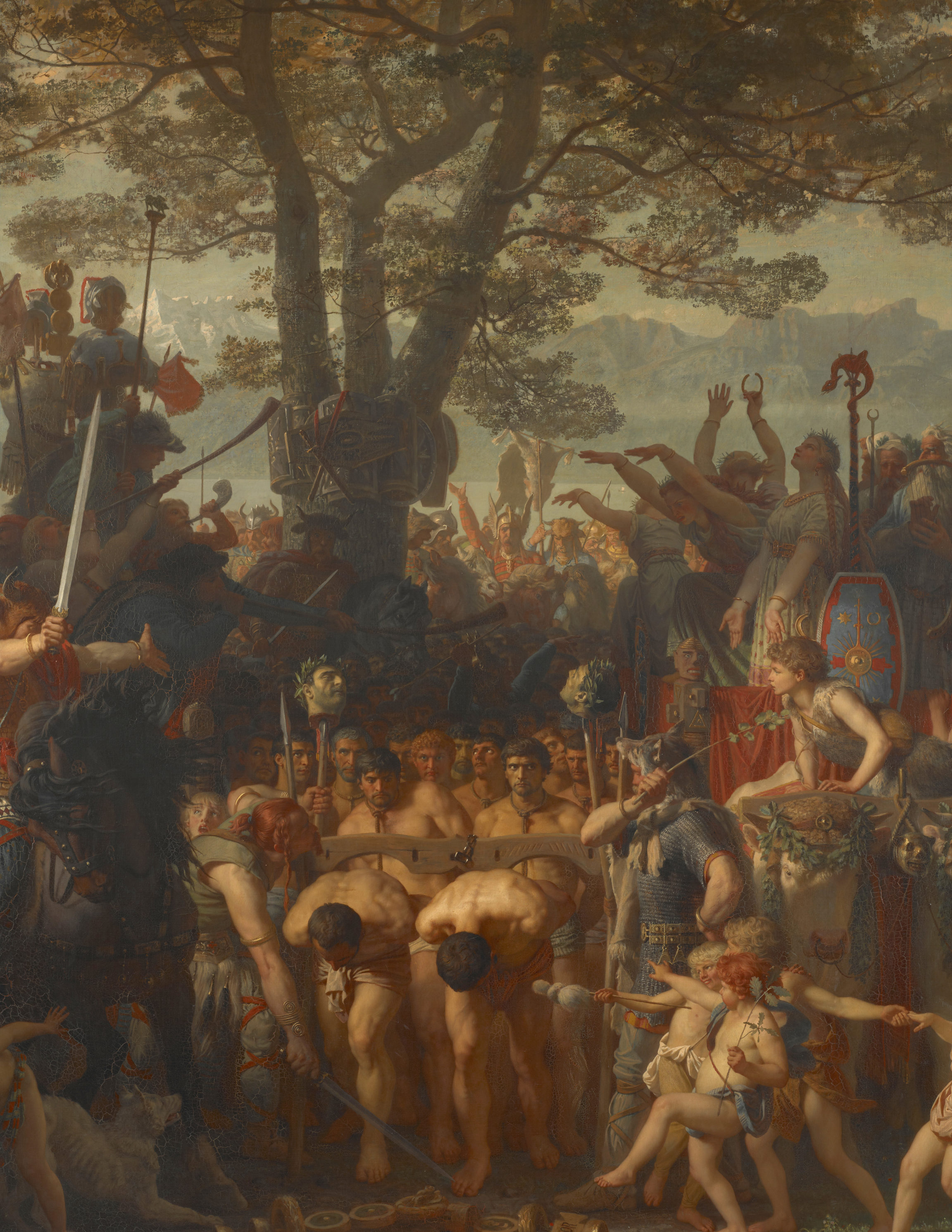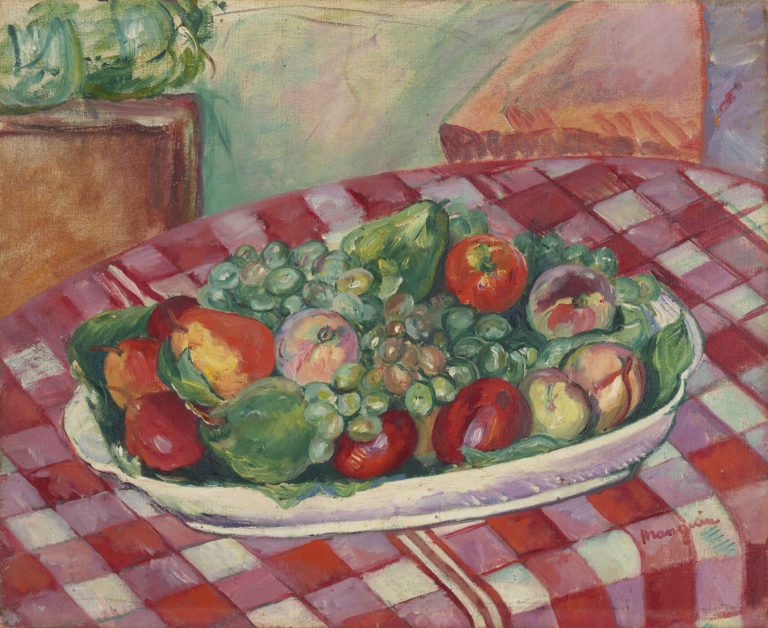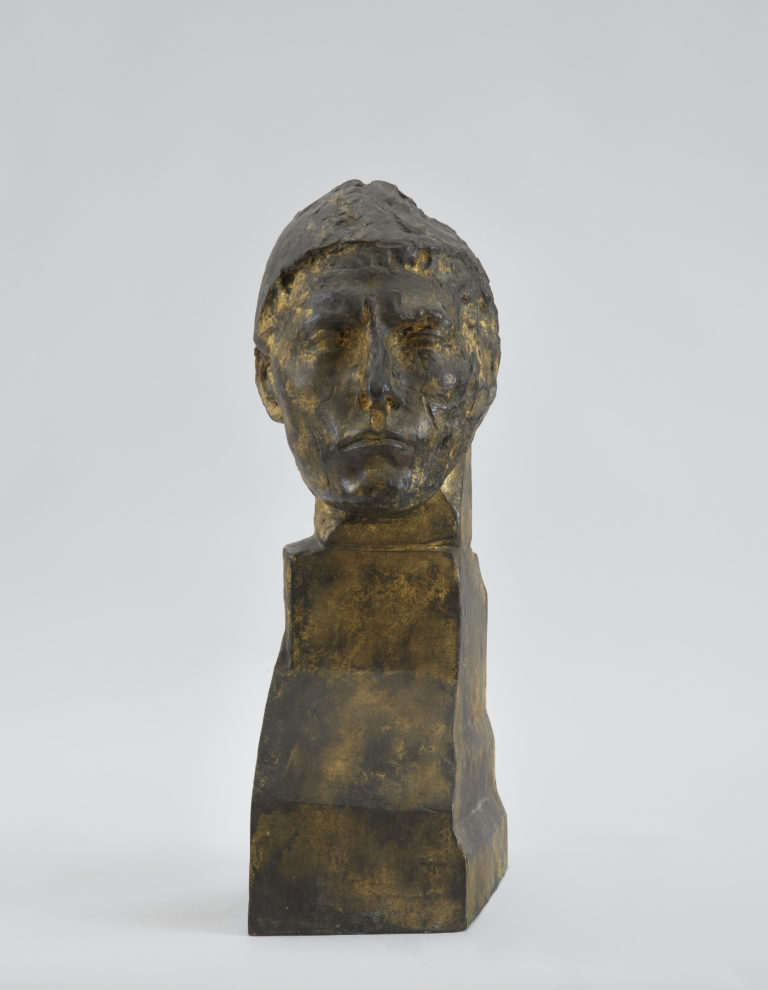Exposé actuellement
The CollectionBibliography
Côme Fabre (ed.), Charles Gleyre (1806-1874). Le romantique repenti, exh. cat. Paris, Musée d’Orsay, Paris, Hazan, 2016: 137-138, n. 80.
Marie Alamir, ‘La Bataille du Léman de Charles Gleyre. L’invention d’un mythe,’ in Catherine Lepdor (ed.), Charles Gleyre. Le génie de l’invention, exh. cat. Lausanne, Musée cantonal des Beaux-Arts, Milan, 5 Continents Editions, 2006: 55-81, n. 161.
William Hauptman, Charles Gleyre 1806-1874. I Life and Works. II Catalogue raisonné, Princeton, Princeton University Press, Zurich, Institut suisse pour l’étude de l’art, 1996, n. 680.




Charles Gleyre’s republican convictions explain his enthusiastic acceptance of a commission from the radical new government in his native Canton of Vaud. He was asked to paint a companion piece to Major Davel (1850, also in the Museum), a monumental history painting that he had recently completed to general acclaim. After depicting the beheading of Jean Daniel Abraham Davel, the hero of the 1723 uprising of the Vaud people against the regime in Bern, he chose another instance of people struggling for independence. Les Romains passant sous le joug refers to the defeat in 107 BC of the Consul Lucius Cassius and his Roman legion by the Helvetians under their chief Divico. The Celts fighting against the invader replace Davel, the solitary hero, and thus a high deed of classical Antiquity, recounted by Julius Caesar in The Gallic Wars, replaces a revolt in modern Swiss history. The work was to become an icon for Switzerland as the young country sought after 1848 to generate unity through myths promoting a sense of national identity.
The painting took Gleyre eight years to complete. He read widely on Celtic material culture and worked on numerous preparatory sketches. Though the scene is now known to have taken place near Agen in southern France, he located it on the shores of Lake Geneva. The scene shows the humiliation of the Roman army. The reference to the battle of the Caudine Forks overlays the claim to a rural, agrarian identity, as the artist shows the Romans forced by the Helvetians to put on yokes usually worn by oxen. The incredibly packed, complex composition is structured around an age-old oak. The upper part features a landscape, while the lower half is full of action. On the left, the Helvetian army is led by Divico, brandishing his sword; on the right is a cart for the druids and priestesses who are singing the victory chant to the heavens, while in the centre, the prisoners are being flogged by warriors as children point and laugh.